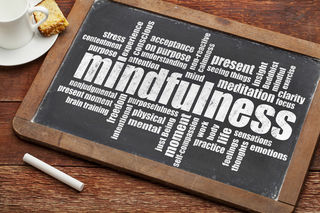Mindfulness
3 Definitions of Mindfulness That Might Surprise You
Getting at the heart of what mindfulness is.
Posted November 1, 2017 Reviewed by Lybi Ma

If you spend any time in mindfulness circles, then you’ve frequently heard (and probably recited) that mindfulness means to pay attention on purpose, in the present moment, and nonjudgmentally.
If you travel in spiritual circles then you know of other ways of thinking about mindfulness such as keeping your attention alive in the present moment.
These insights by Jon Kabat-Zinn and Thich Nhat Hanh, respectively, are powerful and practical. The emphasis on being “purposeful” is crucial as a counterbalance to the automatic pilot default that inhabits our mind most of the time. You can purposefully bring your attention to your child’s smile, to the feeling of the steering wheel, or to the exhale of your breathing. This is mindfulness.
The offering of “aliveness” in the second definition calls us to “wake up” from the sleepwalking of life, and that we have the opportunity to do so throughout the entirety of our day. It reminds me of a clever observation by Benjamin Franklin: “Some people die at 25 and aren’t buried until 75.”
Let’s advance these insights by exploring three other definitions, culminating in the “official” definition of mindfulness used by scientists.
1.) Mindfulness is not taking things for granted.
This is an emotionally pleasing way to think about mindfulness. We accept the lot we’ve been given in life. We assume and expect things will stay the same. Mindfulness challenges us to awaken from these mind-habits and appreciate the little things. But, this definition lacks a bit in specificity around what is happening when mindfulness is actually practiced.
2.) Mindfulness means to return to the present moment.
A common misconception about mindfulness is that it means to stay in the present moment. People practice meditation and get quickly frustrated by their mind’s disinterest in staying in the present moment. Many will exclaim: “I can’t be mindful. I can’t stay in the moment.” But the reality is no one’s mind stays in the present moment. And, considering the nature of what our mind needs to process and compute in each moment, we would not be able to control our mind to chronically stay. But, we have control over the return. We can always return our mind to the present moment, return it to our breath or our senses that can be found in the present moment. This definition is simplistic and clear but not specific enough.
3.) Mindfulness is the self-regulation of attention with an attitude of curiosity, openness, and acceptance.
This is the operational, scientific definition of mindfulness put forth 13 years ago. Sadly, when I've mentioned it to thousands of workshop participants over the years, only a handful (maybe 5 percent) have heard of it. This definition is the consensus of a group of distinguished mindfulness researchers who wanted to offer a clear way for future researchers, practitioners, and consumers to understand this ever-growing and popular practice.
Otherwise, if mindfulness is referred to in 100-plus ways then everyone is on a different page. Researchers are not studying the same thing. Practitioners are teaching different things. Consumers are left confused and misled. Misconceptions and misinformation become more likely.
This last definition is less catchy and sexy than some of the others but it offers a specific, distinct, and clear way of seeing the broad nature of mindfulness and its immediate fruits. The scientists used the word “self-regulation” to refer to how you can take control of your attention, you can regulate your focus. You might deliberately shift your attention to an image on your computer screen, to the body language of your friend as she speaks, to a memory, a future goal, or to your breath.
The second part of the definition refers to our approach of being open to whatever we place our attention on, being interested and curious about what we might discover. It might be something pleasant, unpleasant, or boring, and in any case, your openness, curiosity, and acceptance can be deployed.
Each of the definitions brings interesting and helpful insights but it is the last one that is important for advancing the research and practice of mindfulness.
References
Bishop, S. R., Lau, M., Shapiro, S. L., Carlson, L., Anderson, N. D., Carmody, J., ... Devins, G. (2004). Mindfulness: A proposed operational definition. Clinical Psychology: Science and Practice, 11, 230–241.
Niemiec, R. M. (2014). Mindfulness and character strengths: A practical guide to flourishing. Boston, MA: Hogrefe.


